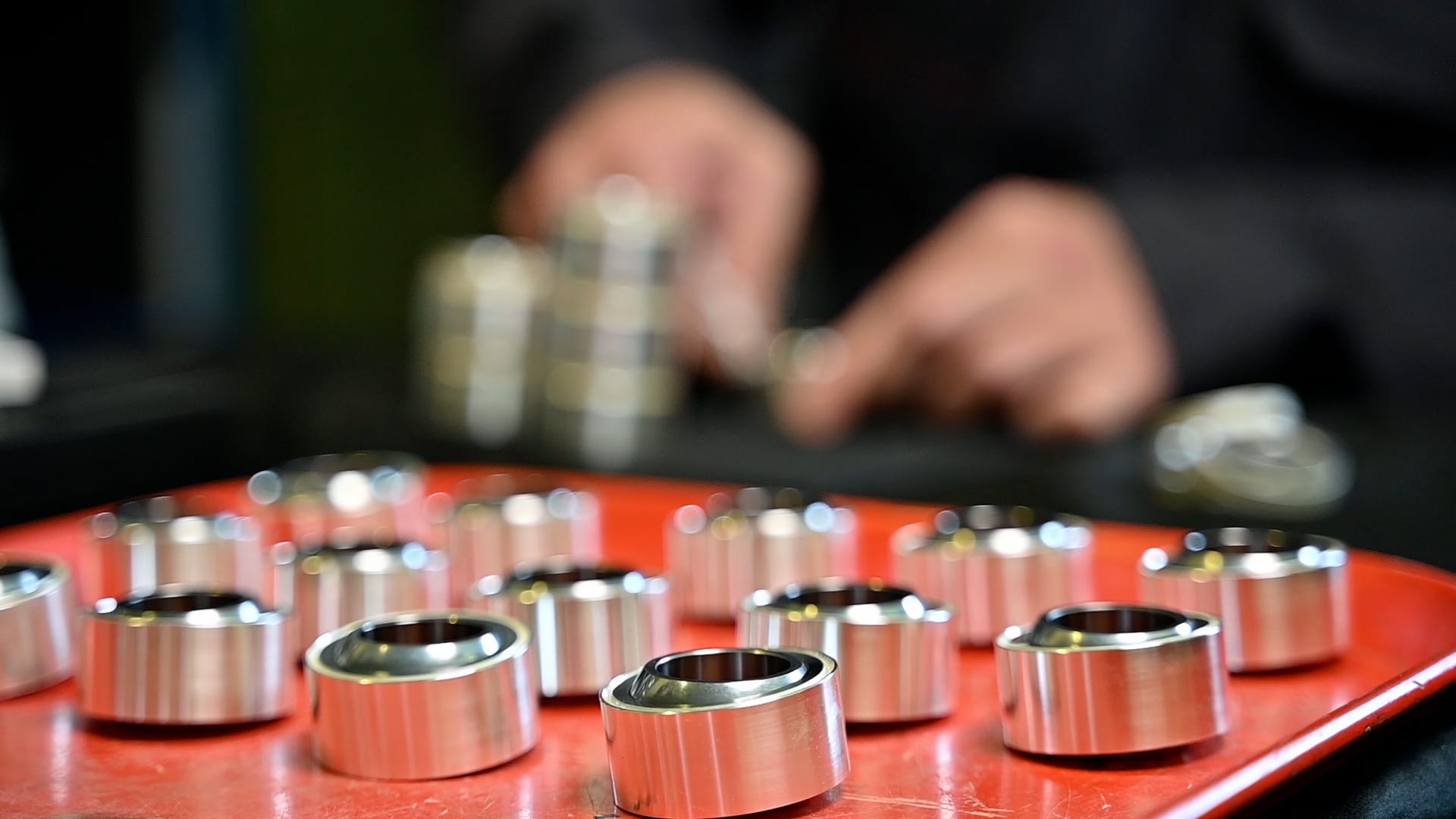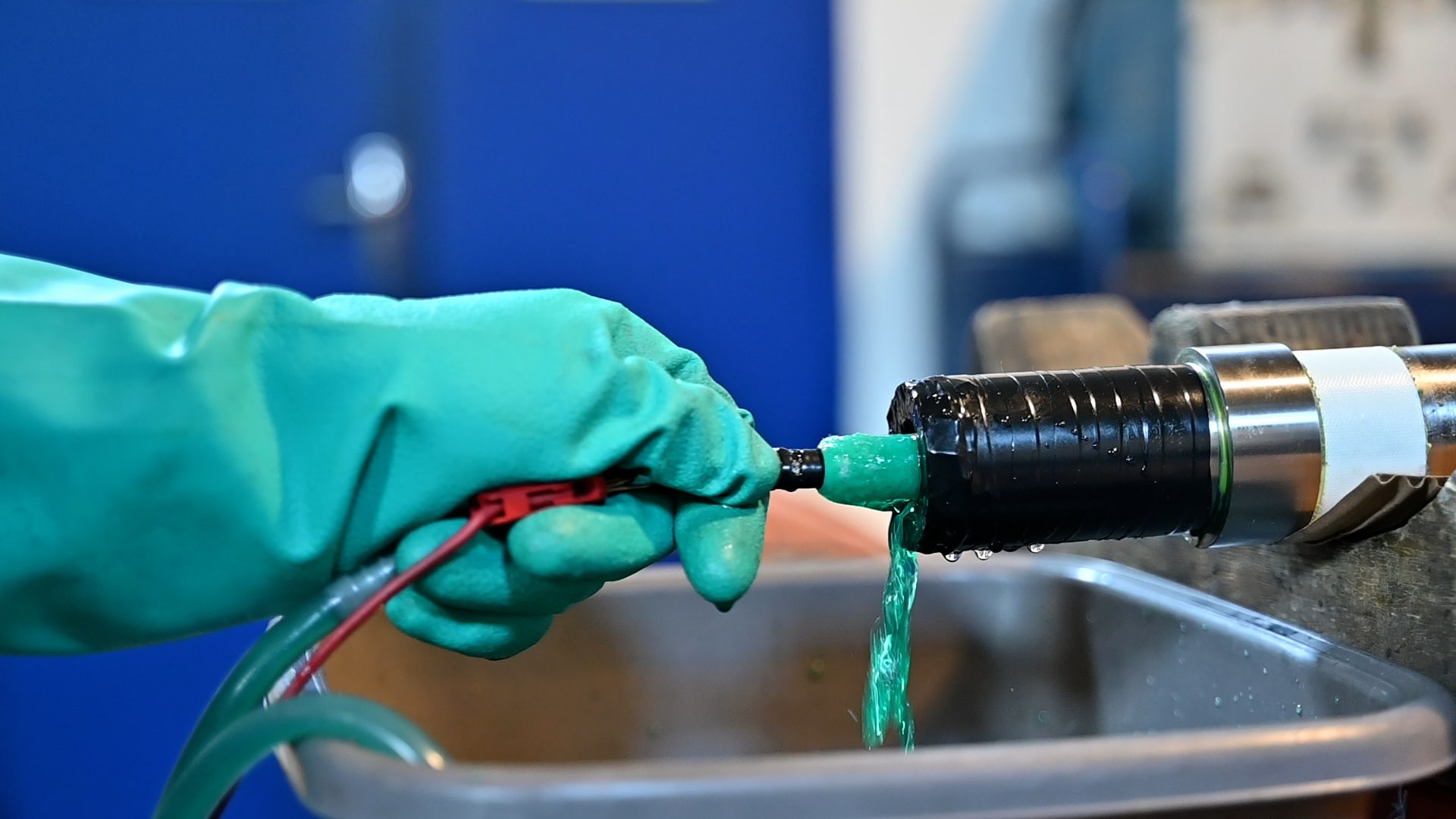
Selective Electrolysis
Tetrachim is introducing a new range of nickel, silver and copper electrolytes by Lorilleux for selective electrolysis process. Selective electrolysis is an electrolytic coating process conducted without immersing the part in a bath. The coating is applied to the part with a special anode device, also called pad, that is impregnated with electrolyte and adapted to the shape and size of the part to be treated.
Pad electrolysis is applicable not only in the case of industrial maintenance but also on new parts in small or medium series.
Selective Electrolysis - How does it work ?
This technique enables precise metal deposition through the application of electric current.
With this process, specialized electrolyte ranges now allow high-quality coatings on a wide variety of electrically conductive substrates—including steel, cast iron, stainless steel, aluminum alloys, titanium alloys and copper alloys.
Using a generator, a voltage of around ten volts is applied to the anode (or pad), which is then brought into contact with the targeted area. The anode is either moved over the surface of the part or, when feasible, the part itself is moved. This creates a transfer of electrons from the electrolyte onto the part, resulting in a controlled metal deposit. The deposited layer can vary in thickness, from a few microns to several millimeters, depending on the application.
Adhesion is achieved at the microscopic level by the combination of 2 actions:
- An electrical action due to the current flow. The positively charged filler metal is attracted to the negatively charged base metal. At the atomic level, there is interpenetration of the 2 metallic networks.
- An electrolytic stripping action that cleans grain boundaries and creates an anchoring network for the deposit.




Selective Electrolysis benefits :
On-site applications: Enjoy hassle-free on-site interventions with a lightweight, portable equipment.
No distortion risk: Since the treatment is performed at room temperature, there is no risk of part distortion, ensuring the integrity of your components.
Reduced hydrogen embrittlement: The friction between the anode and the part helps minimize hydrogen embrittlement, making it ideal for sensitive applications like aeronautical parts.
Targeted treatment: Perfect for treating small, limited areas on hard to transport or unremovable assemblies. This technology provides precise solutions where others can’t.
Direct coatings to size: Achieve the desired coating thickness without the need for final re-machining.
Large parts and surfaces: This process is versatile, allowing for treatment on large parts or expansive surfaces with ease.

Selective electrolysis is applicable not only in the case of industrial maintenance but also on new parts in small or medium series by providing solutions for:
- Mechanical reloading or height adjustment
- Repair of shocks, scratches and impacts
- Anti-corrosion and anti-fretting protection (contact corrosion)
- Electromagnetic shielding
- Electrical insulation
Selective Electrolysis application examples
-
Aerospace
Localized repair of aircraft components
Corrosion protection without dismantling assemblies -
Printing/textiles
In-situ refilling of worn cylinders
-
Oil & Gas/Energy
Refurbishment of valves, pump components, and drilling tools
Enhancing resistance to corrosion and harsh environments
-
Marine
Corrosion prevention on propellers, shafts, and other submerged parts
Restoration of protective coatings without dry-docking -
Railway & Heavy Machinery
In-situ replating of large, high-wear components
Minimizes downtime and disassembly costs
Frequently asked questions
Frequently asked questions
Tetrachim now offers nickel, silver and copper electrolytes for deposition. Other metals can be available upon request, depending on your application. Please contact our team for further assistance.
The process works on all electrically conductive substrates, including:
-
Steel
-
Stainless steel
-
Cast iron
-
Aluminum alloys
-
Titanium alloys
-
Copper alloys
Deposits can range from a few microns to several millimeters, depending on your requirements and the material used. One of the benefits of selective electrolysis is the ability to apply coatings directly to final dimensions, eliminating the need for finishing operations.
Selective electrolysis generates less waste compared to traditional tank plating. It uses less electrolyte, treats smaller surface areas, and minimizes resource consumption.
Want more information on selective electrolysis?
You do not know how to get started with selective electrolysis. If you can’t find the answer you are looking for, do not hesitate to call us at +33 (0)1 61 44 02 90 or send an email at info@tetrachim.com.





